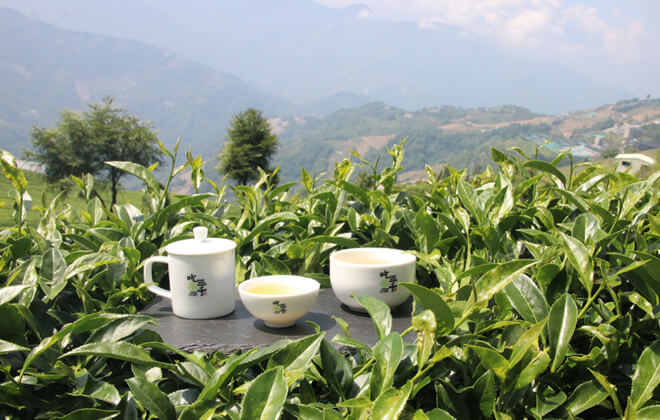Tea Drinking and Appreciation
4 min readWe Chinese give great attention to our tea and the way they drink it. People have high requirements for the quality of the prepared tea leaves, the water they use to brew tea and the wares they use to prepare and serve tea.

Tea Appreciation
Generally, appraisement of tea leaf is based on four principles, namely, appearance of the infused leaf, color of the liquid, aroma and taste. There are many different characteristics to the shape of the leaf. For instance leaves can be curly or flat, needle-like or flower-like. Theappearance of the leaf is important, but the aroma and taste are the more important factors in judging the quality of a kind of tea.
The Chinese emphasize water quality and water taste, so people select their water carefully. Fine water must be sweet, cool, clean, and flowing. Water from good springs is always considered best, as is rainwater from autumn and the rainy seasons. Tap water may have a perceptible odor or taste, which will be imparted to the infused brew, and will compromise the quality of the tea.
Chinese people take great delight in sampling tea. By sampling, one is not only discriminating the quality of the tea, but also experiencing the intoxication and enjoying being lost in reverie. One would snatch a little leisure from the busy life, make himself a nice cup of tea at home and imbibe slowly in small sips. One could also secure a serene space outside, for example,a teahouse tucked away in a park or nestled in a hill. Tea-drinking will be sure to relieve one’s weary and release one’s worry until one’s spirit soars up and up into a sublime aesthetic realm.

Teapot Appreciation
In China, people think different teas look and taste better in certain tea wares than others. For example, green tea should be matched with glass tea ware; scented tea is poured into porcelain ware; and oolong tea is best presented in purple clay tea ware. Chinese prefer pottery wares to wares made of metal or other materials. The best choice is the purple clay wares made in Yixing, Jiangsu province. The purple clay of this region gives the wares their internationally-known purple color.
Yixing has been famous for the production of purple clay teapot since the Northern Song Dynasty. Purple clay ware is made from purple clay or red clay found in Yixing region. It is delicate and hard in nature, but is also able to have air penetration at the same time.
The aroma of the tea can be stored in purple clay ware teapot, and will then be absorbed by the clay. As the purple clay ware is fairly heat insulated, it is good for tea drinking both in winter and summer. The most attractive thing about this kind of ware is that it looks shiny through time and the often used pot can release a kind of aroma when it is just filled with hot water without tea. This is the reason why purple clay ware is regarded as invaluable object by most collectors.
Tea Drinking Customs
Tea plays an important role in Chinese people’s social and emotional lives. Tea is always made and offered to a guest or friend immediately upon that person’s entering a Chinese home.
Serving a cup of tea to the guest is a common practice in China.”To invite the guest to stay longer with a cup of tea”demonstrates hospitality and traditional etiquette. Serving tea ismore than a matter of mere politeness; it is a symbol of togetherness,a sharing of something enjoyable and a way of showing respect to visitors.
When the guest arrived, the host would use the best quality tea leaves and tea utensils to prepare the tea. Normally a host would only fill a teacup to seven-tenths of its capacity. It is said that the other three-tenths would be filled with frendship and affection. For the guest, not to take at least a sip might be considered rude in sone areas. When the host is accompanying the guest and sees that the guest’s cup is already half empty, he should add more hot water for him immediately.

Here are three special circumstances in which tea is prepared and consumed:
A.A Signal of End of Talk
We normally think of tea drinking as an invitation to stay and socialize. Starting from the Qing Dynasty, however, the drinking of tea could signal the close to the social encounter. This was particularly true when one visited one’s superior. When the guest reached the host’s home, the host would offer his guest a cup of tea. They would then talk. When the host wanted his guest to leave, he would signal this by holding his own cup of tea and drinking it. The guest would then know that the host wanted him to leave and would ask to leave. With the end of the feudal society, this practice is outdated and can only be seen in literary works reflecting the old times.
B.A Sign of Respect
In Chinese society,the younger generation would show its respect to the older generation by offering a cup of tea.In the past,people of lower rank served tea to higher ranking people.
Today,as Chinese society becomes more liberal,sometimes at home parents may pour a cup of tea for their children,or a boss may even pour tea for subordinates at restaurants.The lowerranking person should not expect the higher ranking person to serve him or her tea in formal occasions,however.
C.A Gesture of Apology
In Chinese culture,people make serious apologies to others by pouring them tea.Thatis a sign of regret and submission.








